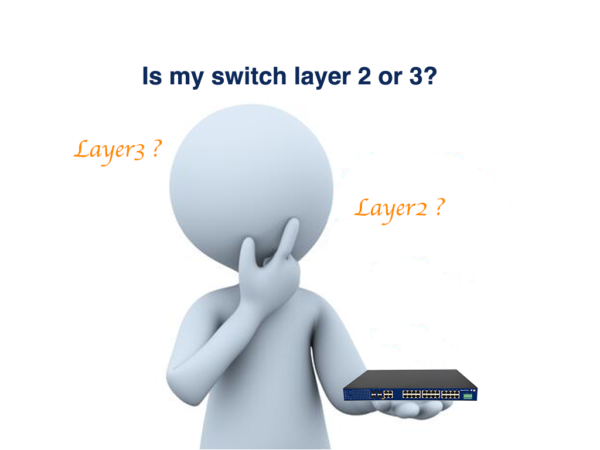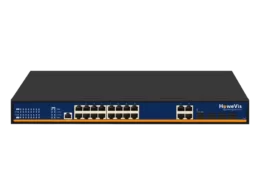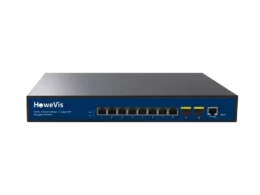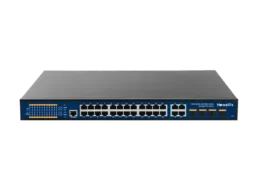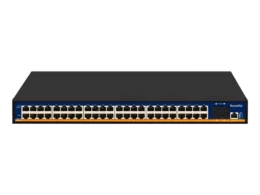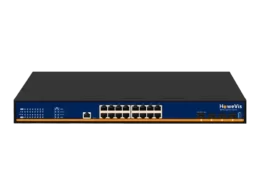Where do you work? At the office or data management centers? At data centers, several computers are used. A high-speed data supply and power are essential to make the system run. What if you don’t have high power for your devices? Serious problem. Moreover, high-speed data is also an important factor out there.
We often use Ethernet switches to power the devices. But do you know which type of switches? Maybe not. Depending upon the working mechanism, we differentiate Ethernet switches into two kinds.
- Layer 2
- Layer 3
Before moving ahead to the topic, we must know the Ethernet switch.
What is an Ethernet switch?
What do you understand by a switch? A networking device, right? The same applies to the Ethernet switch. An Ethernet switch is a type e that can connect multiple devices over the same network and transfer data packets between them. At data centers, you can observe the applications of Ethernet switches where hundreds of devices need to be connected at a time.
If you want a comprehensive guide to Ethernet switches, what is An Ethernet Switch Used for?
What is a Layer 2 and Layer 3 Ethernet switch?
Ethernet switches work differently depending on the system available to them. For example, layer 2 allows you to connect to the network only, while layer 3 optimizes your traffic and acts as a bridge. However, let me define both types of Ethernet switches to make your concepts clear about them.
What is a Layer 2 switch?
Layer 2 Ethernet switches offer the essential facilities to connect devices. So, the layer 2 switch is a hardware device that acts as a bridge between the devices, connects them, and forwards the data packets from the host to the destination computer. It’s quite simple. In a layer 2 switch, switching operates at the Data link layer.
What is a Layer 3 switch?
The layer 3 switch is the latest technology that helps to fulfill the deficits of the layer 2 switch. In addition to connecting devices, it can act as a router. Layer 3 Ethernet receives data packets from the host device, analyzes them, and transfers them to the destination computer. This is an advanced feature.
Is my switch Layer 2 or 3?
Are you confused about which type of switch you are using? No problem. I have a solution. You can easily find the kind you employ at your office or home.
- Check the switch’s routing features. If it supports routing, it can be a layer 3 switch. Otherwise, it can be considered a layer 2 Ethernet switch.
- Another method is to look at the IOS image running on the switch. If the image is LAN type, consider it a layer 2 switch. While for IP BASE or IP SERVICES, you can regard it as layer 3
There can be multiple other ways to identify the layer 2 and layer 3 switches. To make the right approach, you must know the difference between them. Differentiating points will help you identify the type of Ethernet switch.
What are the differences between the layer 2 and layer 3 switches?
To understand both types of switches, you need to know how they are different. Depending on their features, it is no longer possible to determine which type of switch is best for you. Moreover, you can learn to switch at home. Let’s look at the differences between the layer 2 and layer 3 Ethernet switches.
OSI layer:
OSI layer has multiple types. The layer 2 switch works on the data layer, while the layer 3 switch works on the Network layer.
Address:
Usually, the host and destination devices have two addresses—MAC and IP address. Layer 2 switch works only on the MAC address to transfer the data packets. In another case, Layer 3 can transfer the data using both the IP and MAC address.
Broadcast Domains:
Layer 2 switch is a single broadcast domain, while layer 3 is a multiple broadcast domain.
Communication:
In layer 2, the devices can only communicate within the network. They don’t have the facility to communicate outside. This feature is available only in layer 3 switches to offer between and outside the network.
Function:
Layer 2 switch only acts as a bridge to connect the devices. If you want both switching and routing features, you can try the layer 3 switches.
Advantages and disadvantages of Layer 2:
Before landing on the layer 2 switches, you must know their positive and negative aspects. Understanding their importance may change your decision. Here are some of those points that are worth discussing.
Pros:
Here are the plus points regarding layer 2 switches.
- Simple bridging of the network. No complex steps or need for IT specialists
- Lower costs. You can deploy them at a lower price and save money compared to other switches.
- Use MAC address. A unique MAC address for each device can help the host and the destination computer understand each other.
- They are operating at a faster speed compared to layer 3 switches.
Cons:
- It is only best for medium or low traffic. You can not deploy it for high-traffic networks.
- No intelligence or routing functionality to improve the quality of traffic.
- No default features for breaking up broadcast domains.
- May interact with domain collisions.
Advantages and disadvantages of Layer 3:
Like the layer 2 switch, layer 3 has advantages and disadvantages that can help understand.
Pros:
- We offer both routing and networking features for the devices.
- Easy setup as a router and a switch. No need for complex configurations.
- Performs data intelligence before forwarding it to the target device
- It can use both IP and MAC addresses to transfer data packets between devices.
- Reduce the traffic to improve performance. Thus, it is best for high-traffic networks.
Cons:
- Expensive. Unlike layer 2, layer 3 switches are costly and require high deployment costs.
- There is no WAN(Wide Area Network) functionality in the layer 3 switches.
Which one is better for you?
Have questions? I can help you decide on which switch. If you have low—or medium-traffic networks, the layer 2 switch can be a better choice. I recommend the layer 3 switches for high-traffic networks and routing features. The option is yours. Go for anyone that offers better flexibility and data transfer over the network.
